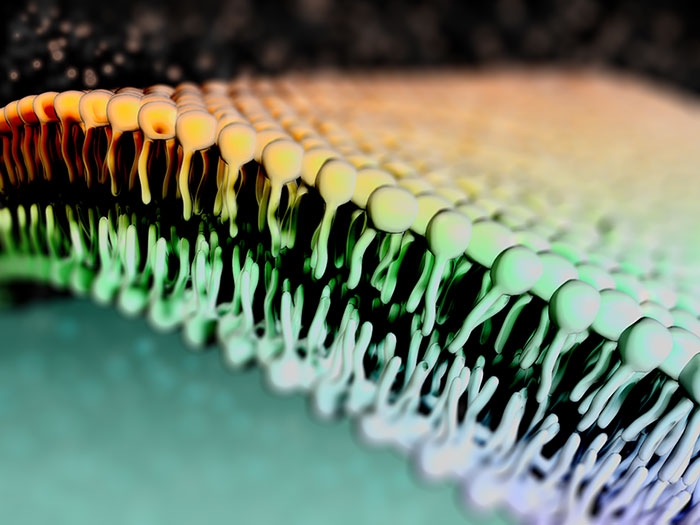Fluid Mosaic Model of the Membrane Bilayer / Single Project
Media Details
| Media ID: | SYM0031 |
|---|---|
| Client: | Scientific |
| Created on: | 2003-05-22 |
| Published on: | 2004-05-05 |
| Dimensions: | 1500 x 2000 pixels |
Type: Illustration
Audiences: Scientific
Keywords: fluid mosaic model, bilayer, lipids, biomembrane, cellular, envelope,
Order or Customize itDescription
A simplified view of the Fluid Mosaic Model where only the lipid bilayer is shown. The lipid tails (e.g. acyl, phytanyl, etc...) are the thin/long protrusions from the headgroup (the large spheroid moiety).
The lipid bilayer is a thin polar membrane made of two layers of lipid molecules. These membranes are flat sheets that form a continuous barrier around cells. The cell membrane of almost all living organisms and many viruses are made of a lipid bilayer, as are the membranes surrounding the cell nucleus and other sub-cellular structures. The lipid bilayer is the barrier that keeps ions, proteins and other molecules where they are needed and prevents them from diffusing into areas where they should not be. Lipid bilayers are ideally suited to this role because, even though they are only a few nanometers in width, they are impermeable to most water-soluble (hydrophilic) molecules. Bilayers are particularly impermeable to ions, which allows cells to regulate salt concentrations and pH by pumping ions across their membranes using proteins called ion pumps (src).
References
None provided













